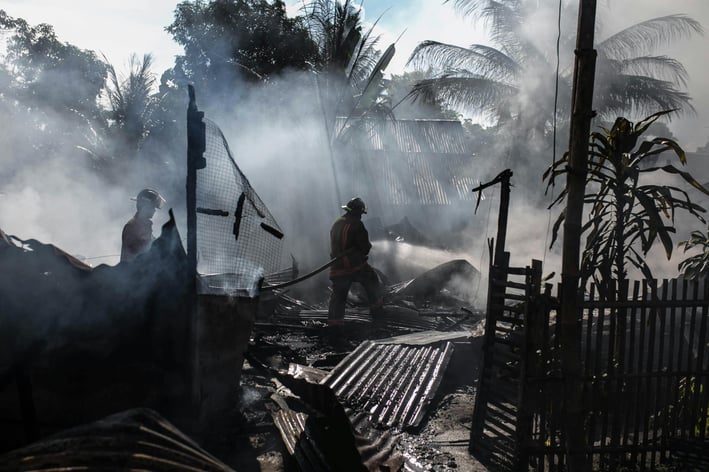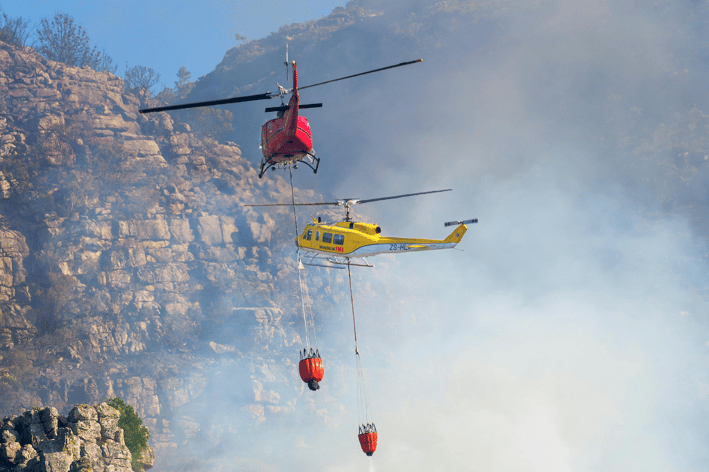Mission-Critical Communications: Unifying P25, TETRA, LTE and MCX for Seamless Reliability
Exploring how hybrid solutions combining narrowband and broadband technologies are transforming mission-critical communications, ensuring seamless voice and data connectivity when it matters most
TRENDS
Miguel Millan Montanes
2/5/20253 min read
In an increasingly connected world, reliable communication is not just a convenience — it’s a necessity. Nowhere is this more important than in mission-critical communications, where the ability to transmit information instantly can literally mean the difference between life and death.
Public safety agencies, transportation systems, and industrial operations rely on robust, secure, and resilient communication networks to ensure their teams stay connected under any circumstances. Technologies like P25, TETRA, LTE, and MCX have become the backbone of these critical systems, providing reliable voice and data services even in the most challenging environments.


P25 (Project 25) and TETRA (Terrestrial Trunked Radio) are two narrowband technologies that have long served as the gold standard for mission-critical voice communications. P25, predominantly used in North America, is celebrated for its interoperability between agencies and robust encryption, which ensures secure transmissions during emergencies. It operates using 12.5 kHz or 6.25 kHz channels (Phase 1 or Phase 2) with FDMA for Phase 1 or TDMA technology for Phase 2, providing one, or two communication channels depending on the Phase used. TETRA, more widely deployed in EMEA, APAC and LATAM, uses 25 kHz channels with 4:1 TDMA modulation, providing four communication channels per carrier frequency pair, which can be dynamically allocated to different functions. While both systems excel in voice communications, their limited data capabilities present challenges in an era increasingly driven by data-rich applications.
LTE (Long-Term Evolution) and MCX (Mission Critical Services) address these data-centric needs. LTE, originally developed for commercial broadband, has evolved into a powerful platform for mission-critical applications, offering high-speed data transmission, video streaming, GPS tracking, and multimedia messaging. Features such as Quality of Service (QoS) prioritization and network slicing ensure that emergency communications maintain priority even during network congestion. However, LTE’s reliance on broadband coverage can present limitations in remote or disaster-affected areas.


MCX, defined by the 3GPP standards body, builds upon LTE and 5G to standardize mission-critical services like Push-to-Talk (MCPTT), video (MCVideo), and data (MCData). MCX is designed to offer low latency, guaranteed access, and seamless interoperability — key attributes for emergency responders requiring real-time video feeds and location tracking alongside reliable voice communication. Nevertheless, like LTE, MCX performance is heavily dependent on network availability.
Recognizing the unique strengths and limitations of each technology, hybrid systems have emerged as the optimal solution. Integrating P25 or TETRA with LTE and MCX allowing organizations to benefit from the reliability and resilience of narrowband voice systems while leveraging broadband technologies for advanced data services. For example, during a search-and-rescue mission in a remote area with limited LTE coverage, first responders can rely on P25 or TETRA for voice coordination while LTE and MCX can facilitate real-time drone video and GPS tracking when coverage is available.


Having had the opportunity to work at a global leader in mission-critical communications, I witnessed firsthand how hybrid solutions can empower emergency responders, railway operators, and industrial teams.
This complementary approach ensures that mission-critical communications are never compromised. Narrowband systems maintain voice connectivity in adverse conditions, while broadband solutions provide data-driven situational awareness, enhancing decision-making in the Command-and-Control Center and operational efficiency.
Cybersecurity also plays an increasingly critical role in mission-critical communications. With the growing reliance on broadband and IP-based networks, protecting these systems against cyber threats is paramount. I will talk more about how we can create secure networks using robust encryptions, intrusion detection systems, and secure access controls in future posts.


The importance of resilient, fail-proof communication systems cannot be overstated. They form the backbone of public safety and operational efficiency across industries. As we move towards a future driven by digital transformation, ensuring the reliability, security, and interoperability of mission-critical communications will remain a top priority for organizations worldwide.
What are your thoughts on the future of mission-critical communications? How is your organization preparing for the next wave of technological advancements?
#MissionCritical #Telecommunications #PublicSafety #TETRA #P25 #LTE #5G #CriticalCommunications #Teltronic #TechnologyInnovation #MCX #MissionCriticalServices #HybridCommunications #Cybersecurity
